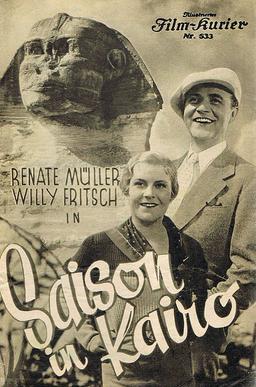
Season in Cairo is a 1933 German musical comedy film directed by Reinhold Schünzel and starring Renate Müller, Willy Fritsch and Gustav Waldau. A French-language version Idylle au Caire was released, also featuring Müller. The film's sets were designed by the art directors Robert Herlth and Walter Röhrig. It was shot on location in Egypt at Giza and Cairo, with interior filming taking place at the Babelsberg Studios in Berlin.

Red Orchids is a 1938 German crime film directed by Nunzio Malasomma, starring Olga Tschechowa, Albrecht Schoenhals and Camilla Horn.

Little Dorrit is a 1934 German drama film directed by Karel Lamač and starring Gustav Waldau, Anny Ondra, and Hilde Hildebrand. It is an adaptation of Charles Dickens' 1857 Victorian era novel Little Dorrit, and made a sharp contrast to the light comedies and musicals that Ondra usually appeared in. The film's sets were designed by the art directors Wilhelm Depenau and Erich Zander.

The House of Three Girls is a 1958 Austrian-West German musical film directed by Ernst Marischka and starring Karlheinz Böhm, Rudolf Schock and Magda Schneider. It is based on the operetta Das Dreimäderlhaus. The story had previously been made into the film Three Girls for Schubert in 1936.

So Ended a Great Love is a 1934 German historical romance film directed by Karl Hartl and starring Paula Wessely, Willi Forst and Gustaf Gründgens.
The Gentleman Without a Residence is a 1915 Austrian silent film directed by Fritz Freund and starring Gustav Waldau, Julius Brandt and Paul Morgan.

Don't Dream, Annette is a 1949 German comedy film directed by Eberhard Klagemann and Helmut Weiss and starring Jenny Jugo, Max Eckard and Karl Schönböck. It was made by DEFA in the Soviet Zone of Germany which was soon afterwards to become East Germany.

King for One Night is a 1950 West German historical comedy film directed by Paul May and starring Anton Walbrook, Willy Fritsch and Annelies Reinhold. It was made at the Bavaria Studios in Munich. The film's sets were designed by the art directors Heinrich Beisenherz and Bruno Monden.

House of Life is a 1952 West German drama film directed by Karl Hartl and starring Gustav Fröhlich, Cornell Borchers and Edith Mill. The film's setting is a maternity hospital, portraying the stories of various staff and patients.
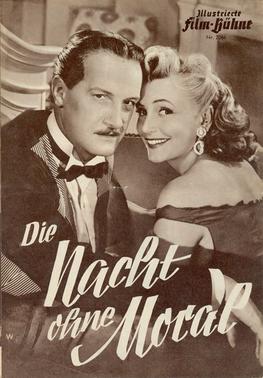
The Night Without Morals is a 1953 West German comedy film directed by Ferdinand Dörfler and starring Claude Farell, Gustav Knuth and Lucie Englisch. It was shot at the Bavaria Studios in Munich. The film's sets were designed by the art directors Willi Horn and Ludwig Reiber.
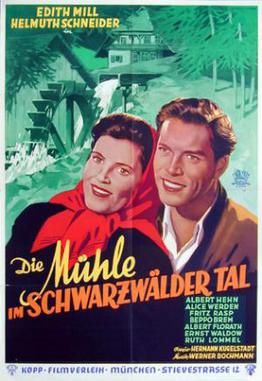
The Mill in the Black Forest is a 1953 West German drama film directed by Hermann Kugelstadt and starring Edith Mill, Helmuth Schneider and Albert Hehn. It was shot at the Bavaria Studios in Munich. The film's sets were designed by the art director Max Seefelder. Location shooting took place at Furtwangen in the Black Forest and Bingen on the Rhine.

Who Is This That I Love? is a 1950 West German musical comedy film directed by Géza von Bolváry and starring Jester Naefe, Adrian Hoven, and Iván Petrovich. It was shot at the Wiesbaden and Bavaria Studios and on location around Lake Starnberg. The film's sets were designed by the art directors Fritz Lück and Hans Sohnle.
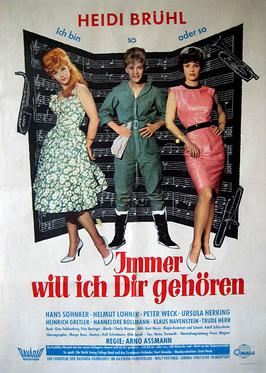
I Will Always Be Yours is a 1960 West German musical comedy film directed by Arno Assmann and starring Heidi Brühl, Hans Söhnker and Helmuth Lohner.

She and the Three is a 1935 German comedy crime film directed by Victor Janson and starring Gustav Waldau, Charlotte Susa and Hubert von Meyerinck.
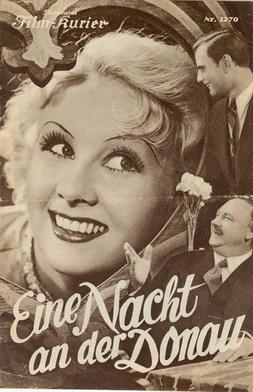
A Night on the Danube is 1935 German comedy film directed by Carl Boese and starring Olga Engl, Wolfgang Liebeneiner, and Gustav Waldau. It was shot at the EFA Studios in Berlin and on location in Budapest and Vienna. The film's sets were designed by the art directors Emil Hasler and Arthur Schwarz.

Immortal Light is a 1951 West German drama film directed by Arthur Maria Rabenalt and starring Rudolf Forster, Cornell Borchers and Volker von Collande. It was shot at the Bavaria Studios in Munich and on location in Paris. The film's sets were designed by the art directors Willi A. Herrmann and Heinrich Weidemann.
In Thrall to the Claw is a 1921 Austrian silent film directed by Carl Froelich and starring Eugen Jensen, Gustav Diessl, and Julius Strobl. While visiting the set, future director Georg Wilhelm Pabst made his only ever screen appearance as an actor.

The Silent Angel is a 1954 West German drama film directed by Harald Reinl and starring Josefin Kipper, Robert Freitag and Christine Kaufmann. It was shot at the Wiesbaden Studios in Hesse and on location in Kastel and Eltville and Kaub in the Rhine Valley. The film's sets were designed by the art director Heinrich Beisenherz.

The Forest House in Tyrol or The Lodge in Tyrol is a 1955 West German drama film directed by Hermann Kugelstadt and starring Wera Frydtberg, Helmuth Schneider and Dorothea Wieck. Location shooting took place around Mittenwald, Innsbruck and Kitzbühel. Interiors were shot at temporary studio in Mittenwald. The film's sets were designed by the art director Max Seefelder. It was part of the boom in heimatfilm in post-war West Germany.
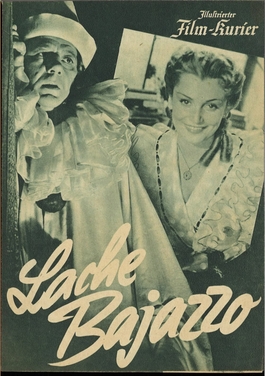
Laugh, Bajazzo is a 1943 German drama film directed by Leopold Hainisch and starring Paul Hörbiger, Claude Farell and Dagny Servaes. A separate Italian-language version Laugh, Pagliacci was also produced. The film's sets were designed by the art director Franz Koehn and Hans Kuhnert.


















